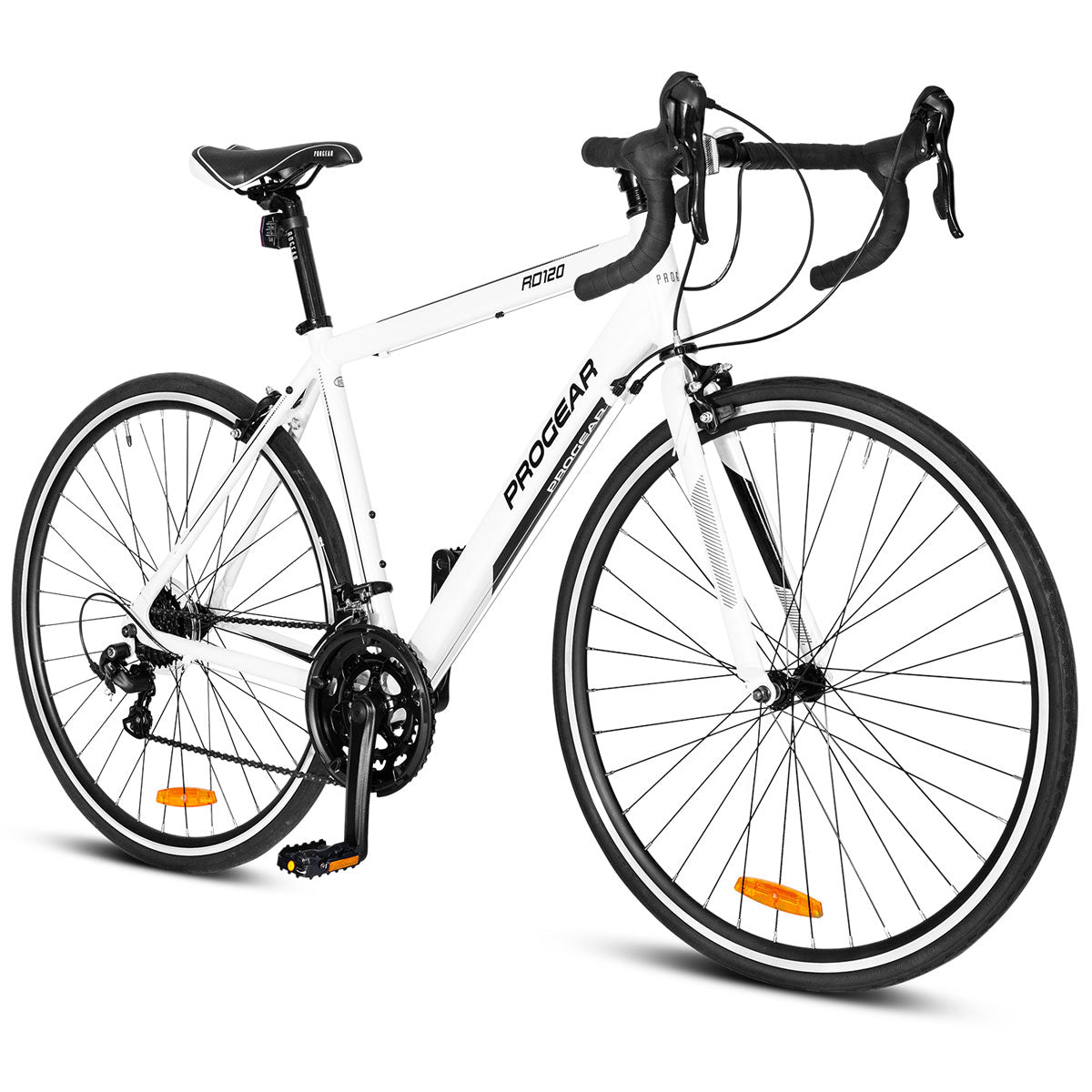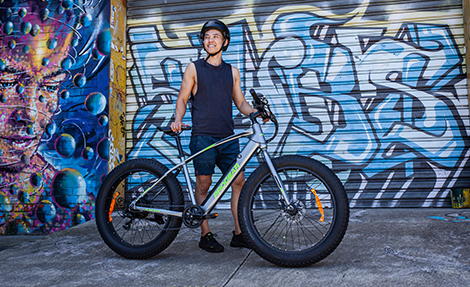
It seems like e-bikes are all the rage in recent years. On top of regular cyclists making the move to electric, many people are ditching the car or train for an e-bike. But which one is right for you? E-Bikes, with their electric motor assistance, offer a modern twist on traditional cycling, making rides smoother and less strenuous. On the other hand, normal road bikes continue to be favoured for their simplicity, affordability and health benefits. We're here to unpack the benefits and disadvantages of each choice to help you make the right decision.
What is an E-Bike?

An E-Bike, or electric bike, is equipped with an electric motor to assist with pedalling. This motor is powered by a rechargeable battery, providing varying levels of pedal assistance or full electric propulsion, depending on the model. E-Bikes typically feature controls to adjust the level of assistance, making them versatile for different terrains and fitness levels. They are popular for commuting, recreational riding and touring, offering riders a more effortless and enjoyable cycling experience compared to traditional bikes.
Advantages of E-Bikes
E-Bikes offer several advantages that make them a compelling choice for many cyclists. Firstly, they provide assisted pedalling, making it easier to tackle hills and travel longer distances without excessive effort. They're also environmentally friendly, emitting zero emissions and reducing carbon footprints compared to cars. E-Bikes also promote accessibility to cycling by accommodating riders of varying fitness levels and physical abilities. Whether for commuting or leisure, E-Bikes offer a convenient and enjoyable way to navigate urban environments while promoting a healthier lifestyle.
Disadvantages of E-Bikes
While E-Bikes offer many benefits, they also come with several considerations. For instance, they tend to have a higher initial cost compared to traditional bikes due to the added electric components. E-Bikes are reliant on battery life, requiring periodic recharging and potentially limiting range on longer journeys. Concerns about infrastructure for charging stations may also pose challenges, especially in less urbanised areas. The complexity of E-Bikes may lead to higher maintenance costs and repairs compared to non-electric bicycles.
What is a Normal Bike?

A normal bike relies solely on human power for propulsion. It consists of a simple frame, wheels, pedals and usually a chain-driven mechanism that transfers energy from the rider's pedalling to move the bike forward. Normal bikes are appreciated for their simplicity, lightweight design and ease of maintenance. They offer a traditional cycling experience that promotes physical fitness and outdoor enjoyment without the assistance of electric motors or batteries. Ideal for various terrains and purposes, normal bikes remain a popular choice among cyclists for their reliability and straightforward operation.
Advantages of Normal Bikes
They're typically more affordable than E-Bikes, making them accessible to a broader range of riders. Their simple design translates to easier and more cost-effective maintenance compared to electric models. Riding a normal bike provides significant health benefits, including improved cardiovascular fitness, muscle strength and overall well-being. The physical exertion required for pedalling enhances endurance and burns calories, promoting a healthy lifestyle. For those who enjoy the simplicity and traditional experience of cycling, normal bikes remain a popular and practical choice.
Disadvantages of Normal Bikes
Normal bikes require significant physical exertion, which can be challenging for individuals not accustomed to regular cycling or those tackling steep inclines. Compared to E-Bikes, normal bikes typically have lower maximum speeds and may struggle on uphill terrain without electric assistance. Long-distance rides can also be demanding due to the continuous need for pedal power. However, for riders seeking a more traditional cycling experience and who enjoy the physical challenge and health benefits of human-powered transportation, these factors may be outweighed by the enjoyment and sense of accomplishment that normal bikes provide.
Key Differences Between E-Bikes and Normal Bikes

Speed
One of the significant differences between E-Bikes and normal bikes is speed. E-Bikes can reach higher speeds than traditional bikes, providing motor-assisted pedalling up to 25km/h. This makes E-Bikes ideal for commuting and covering longer distances efficiently. In contrast, normal bikes rely solely on the rider's physical power, resulting in lower maximum speeds. While normal bikes promote a more leisurely and traditional cycling experience, E-Bikes offer enhanced speed and agility.
Riding Experience

E-Bikes provide a significantly different riding experience compared to normal bikes. With electric motor assistance, E-Bikes offer a smoother and less physically demanding ride, particularly beneficial on uphill climbs and extended journeys. Riders can adjust the level of assistance to suit their preferences and terrain, reducing the strain on muscles and joints. Normal bikes provide a traditional cycling experience reliant solely on the rider's physical strength and endurance. While this promotes a sense of accomplishment and physical fitness, it also requires more effort, especially on challenging terrains. Choosing between an E-Bike and a normal bike often boils down to personal preference for riding style and desired level of physical exertion.
Weight
E-Bikes typically weigh more than normal bikes due to the additional components like the electric motor and battery. This added weight can affect manoeuvrability and ease of transport, especially when lifting or storing the bike. Normal bikes are generally lighter and more agile, making them easier to handle and navigate, particularly in tight spaces or when carrying them up a set of stairs. The lighter weight of normal bikes also contributes to a more responsive riding experience, allowing riders to easily accelerate and manoeuvre without the bulkiness of electric components. Considerations of weight are crucial when choosing between these two bike types based on your lifestyle and transportation needs.
Cost

E-Bikes typically come with a higher upfront cost compared to normal bikes due to the inclusion of electric motors, batteries and associated components. This initial investment reflects the advanced technology and convenience they offer for commuting and recreational riding. On the other hand, normal bikes are generally more affordable at the point of purchase, making them accessible to a broader range of cyclists. Beyond the initial cost, maintenance expenses should also be considered, as E-Bikes may require specialised servicing for electric components.
How to Decide Which One for You?
Choosing between an E-Bike and a normal bike depends on several factors tailored to your lifestyle and preferences. Consider your intended usage—whether it's daily commuting, leisurely rides or more challenging terrains like mountain trails. Evaluate the terrain you'll encounter most often and how each bike type handles those conditions. Personal preferences such as the level of physical exertion and your comfort with electric assistance should also be weighed. Finally, factor in budget constraints, including initial costs and ongoing maintenance expenses. By evaluating these aspects, you can make an informed decision that aligns with your cycling goals and lifestyle.
Ready to Ride? Choose Your Perfect Bike at Progear Bikes Today!

Now that you've explored the differences between E-Bikes and normal bikes, it's time to find your ideal ride. Browse our extensive collection of bikes designed for commuting, fitness and adventure. Make an informed decision based on your lifestyle and preferences. Explore our range today and discover why Progear Bikes is your destination for a quality biking experience.






















1 comment
Interested in purchasing an electric bike